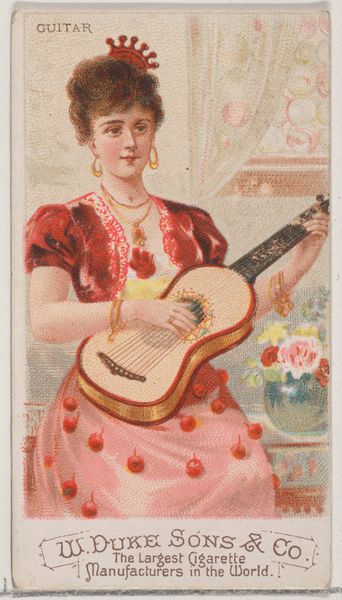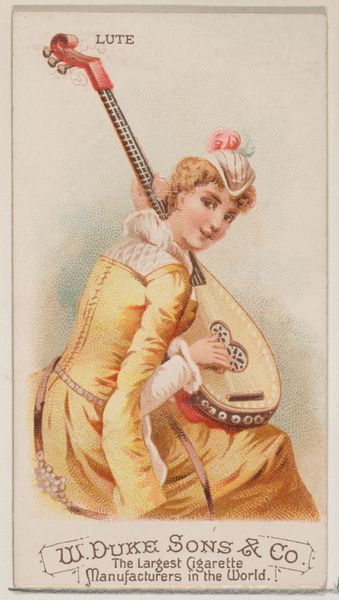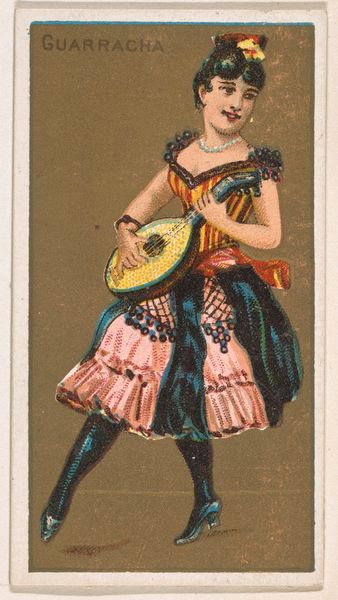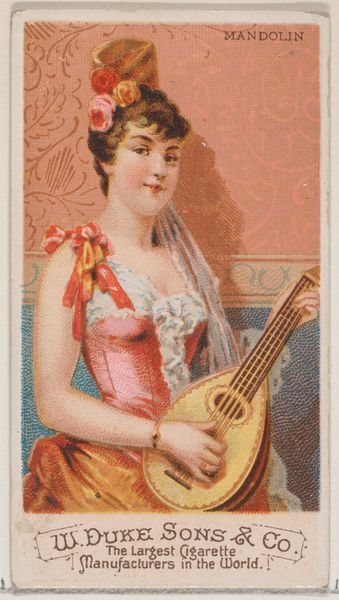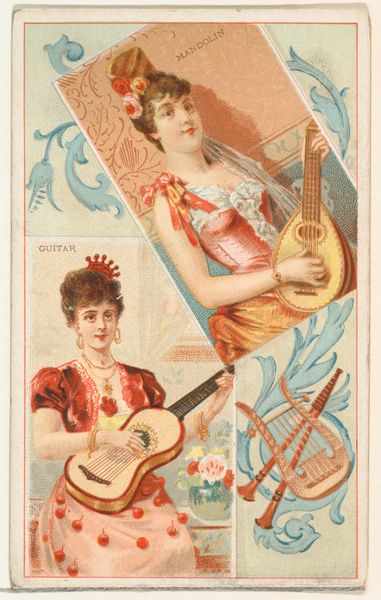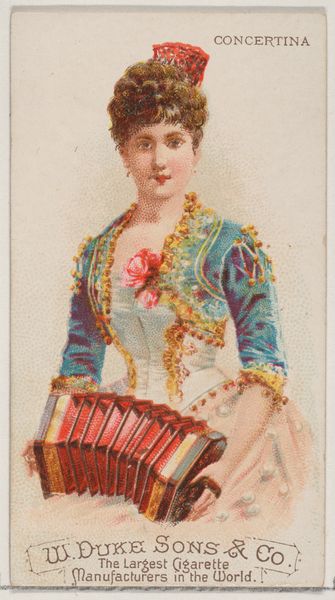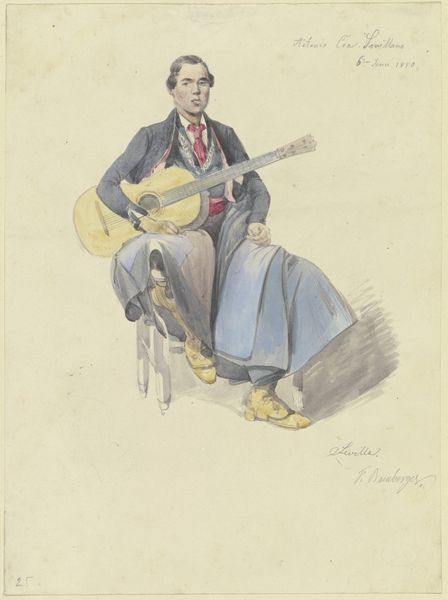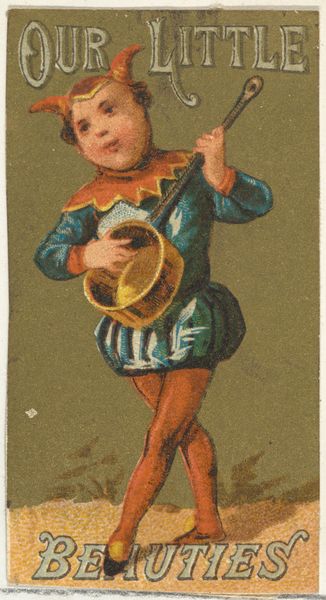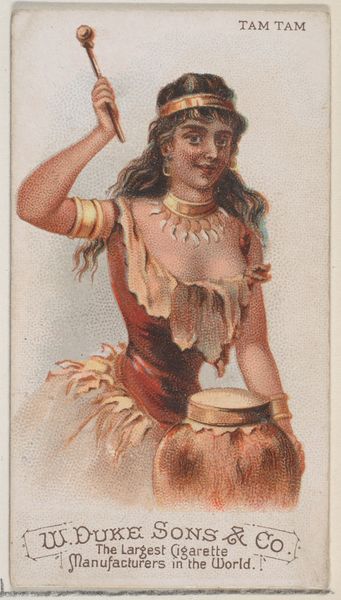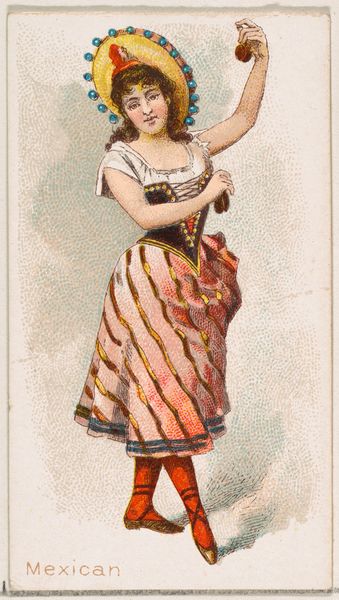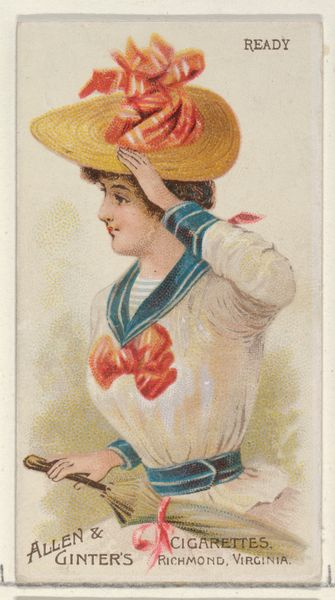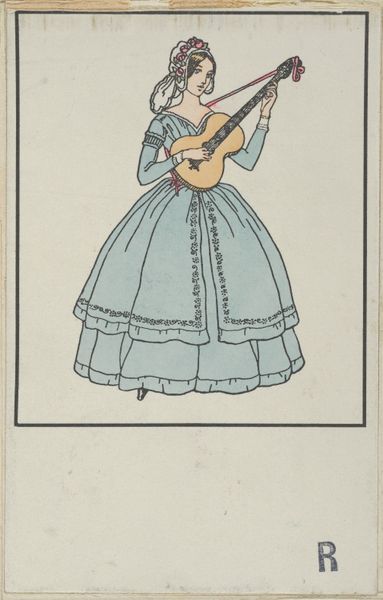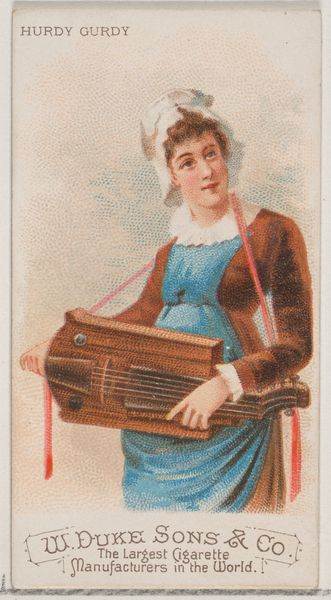
Banjo, from the Musical Instruments series (N82) for Duke brand cigarettes 1888
0:00
0:00
#
portrait
# print
#
coloured pencil
Dimensions: Sheet: 2 3/4 x 1 1/2 in. (7 x 3.8 cm)
Copyright: Public Domain
This small chromolithograph of a woman playing the banjo was made by W. Duke, Sons & Co. as a promotional insert for their cigarettes, sometime between 1870 and 1920. The banjo has a complicated history: originating from instruments brought to the Americas by enslaved Africans, it later became strongly associated with blackface minstrelsy, a popular form of entertainment that reinforced racist stereotypes. Here, the woman's exaggerated features and presentation as a performer connect to that troubling legacy. It’s important to note that the image wasn’t intended as art, but as a marketing tool. The company sought to associate its brand with contemporary cultural trends. The image’s artistic value today lies in what it reveals about the social and cultural values of its time. Historians interested in the cultural significance of objects like this one often turn to sources like newspapers, advertisements, and company records to understand their original context. This helps us interpret the meaning of art as contingent on its social and institutional moment.
Comments
No comments
Be the first to comment and join the conversation on the ultimate creative platform.

